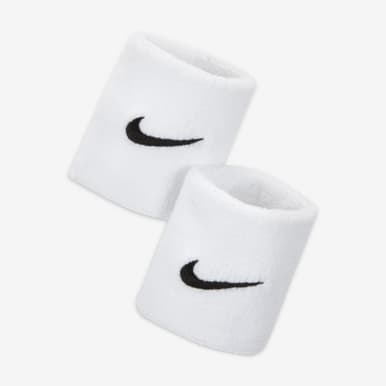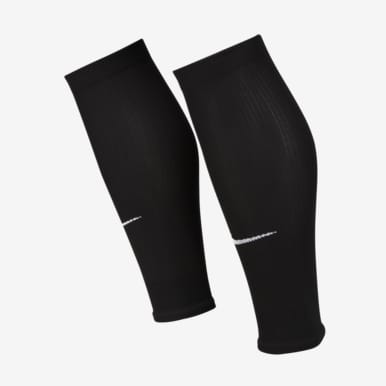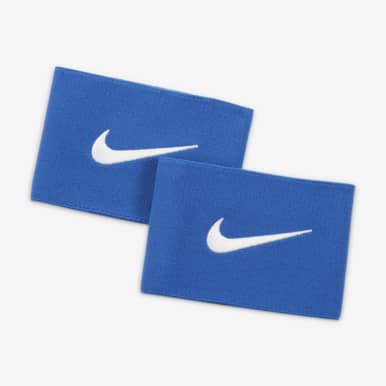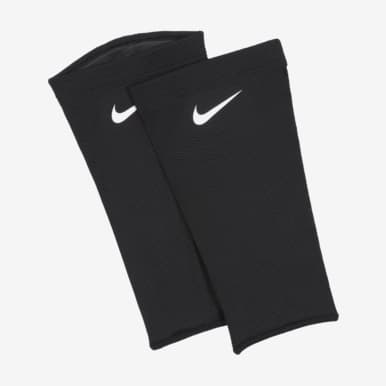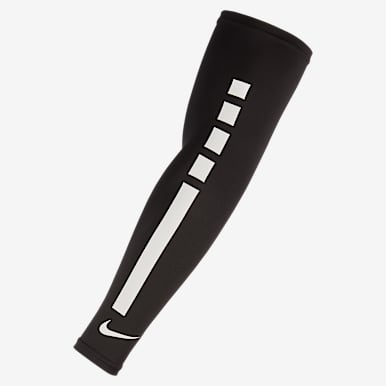Enjoy an extended 60-day return period. Learn More
7 Common Questions About Using a Compression Sleeve
Buying Guide
You've seen pro athletes wearing them, but what do compression sleeves do?What are the benefits?How do you wear them?We tackle these questions and more.
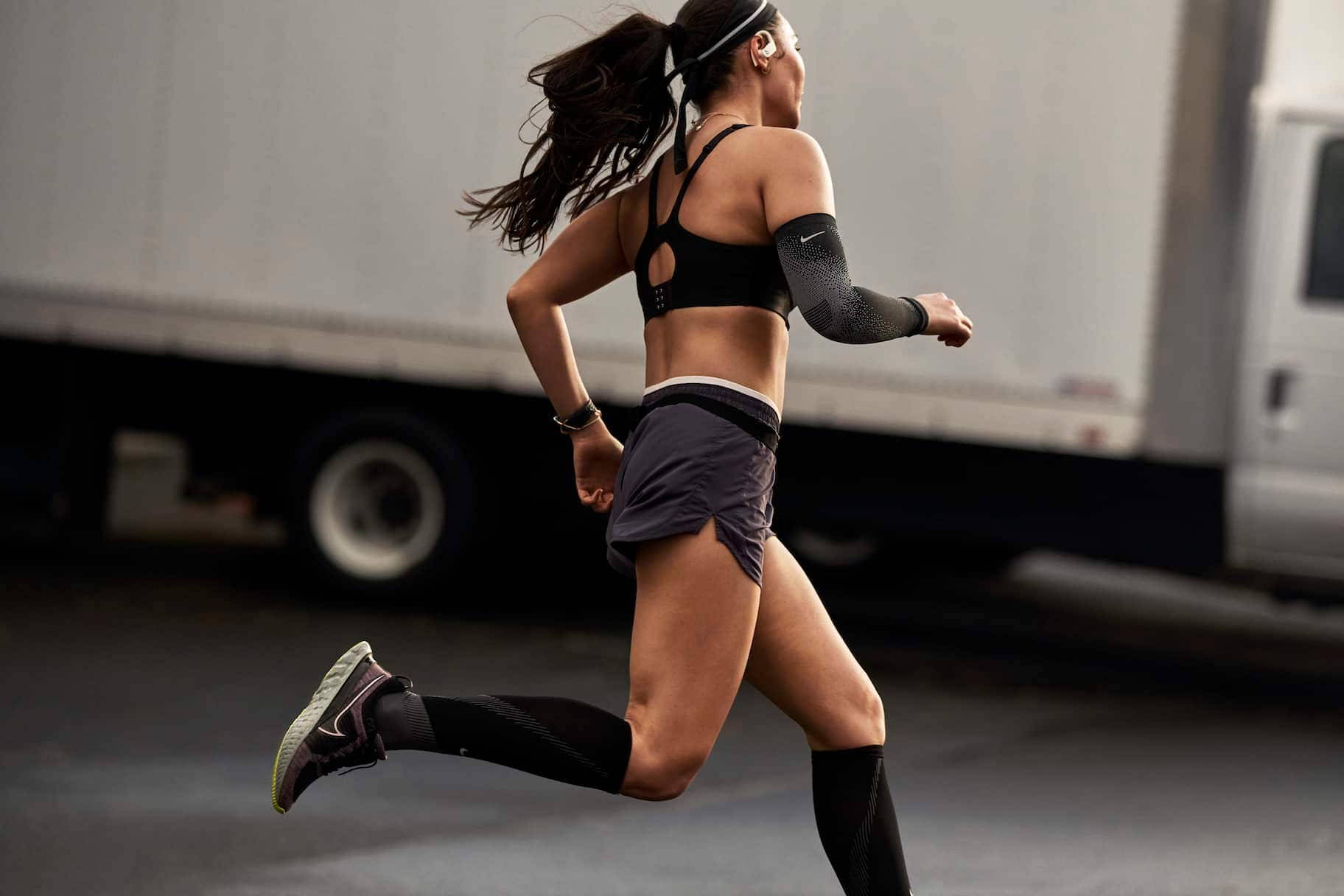
Want to give your athletic performance a boost just by adjusting your clothing?Wearing a compression sleeve, which has been shown to aid in recovery and support performance, may be your answer.
1. What Is a Compression Sleeve?
A compression sleeve is a tight, elasticised band of fabric commonly worn on the legs or arms to improve blood flow.
Specifically, athletes often wear sleeves on their calves, elbows, knees or ankles.
You pull the sleeve on much like a pair of socks or gloves and get it into the intended position, smooth against your skin.Unlike socks, though, compression sleeves are designed with a compression gradient that encourages blood flow back to the heart.
2. What Are Compressions Sleeves Made From?
Compression sleeves are usually made from a combination of nylon and elastane to form a stretchy, lightweight cover.Compression apparel also often contains polyester.
As compression sleeves have become more popular in recent years, the term compression has been applied as a catch-all for any stretchy, skin-tight activewear.
However, true compression sleeves are meant to apply gentle pressure in order to work properly.That means they need to hug your form.So don't opt for larger sizes if it feels snug.After a while, you'll forget it's even there.
3. What Are the Benefits of Compression Sleeves?
- More efficient recovery
- Improved running economy
- Reduced injury risk
- Prevention of swelling and inflammation
4. How Do Compression Shorts Work?
The pressure gradient produced by a compression sleeve manipulates your arteries and veins to increase circulatory efficiency.
Simply put, it increases blood pressure to improve circulation.By increasing blood pressure in a certain area, blood flow around the body increases, which can deliver:
- More oxygenated blood to the muscles to break down glucose, creating adenosine triphosphate (ATP), the muscle's energy source
- Faster removal of lactic acid from the muscle to help prevent muscle fatigue
- Increased venous return, reducing inflammation, fluid retention (oedema) and swelling, which can help facilitate workout recovery
- Compression of the muscles that limits muscle oscillation (e.g., impact on your muscles from your feet hitting the ground after a jump) and lowers subsequent injury risk
- Compression of the muscles that alleviates symptoms of delayed onset muscle soreness (DOMS)
5. What Are Compression Arm Sleeves For?
If you're asking yourself, "When and where would I wear an arm compression sleeve?" The answer is: During any sport that requires upper-body activity like running, basketball, tennis, golf, volleyball, football or weightlifting.
You can also wear the arm sleeve during a workout to help blood flow, or afterwards, to help recovery.
Some people also wear compression arm sleeves on aeroplanes to prevent deep vein thrombosis, because the pressure from the compression stops blood from pooling and clotting.
There are multiple different types of upper-body compression wear, but here are some common examples:
- Upper arm to hand – This includes a partial glove and encourages blood flow up into the arm stopping just before the shoulder.A tennis player may wear this during training to protect the arm against injury.
- Glove – A glove compression is used to support the wrist. For example, a golfer might wear this to prevent overuse injury during training.
- Elbow sleeve – An elbow sleeve keeps your arms covered and protected from bumps and scrapes.You can also get elbow sleeves with added protection, such as in the Nike Contact Support Elbow sleeve.This would be particularly useful for individuals playing contact sports like rugby.
6. What Are Leg Compression Sleeves For?
Sports that require lower-body activity and mobility such as football, basketball, cycling, running, weightlifting and football (to name a few) are ideal situations for leg compression sleeves.
The most commonly used sleeves include calf, knee and ankle compression sleeves.Sleeves for joints like the ankles and knees, should offer foam padding to provide additional cushioning and support to further reduce muscle oscillation and injury risk.
Combining lower- and upper-body compression sleeves can be useful for sports that require the full body, like football or basketball.
7. When Should You Wear a Compression Sleeve?
Compression sleeves are most commonly worn during exercise, since that's when your muscles most need increased blood flow, oxygen and energy.
You can also wear compression sleeves after a workout to support recovery.The increased venous return can reduce exercise-induced inflammation, remove lactic acid build-up and minimise swelling.
Aside from workouts, it's also common for athletes to wear compression sleeves during travel to fight swelling and fluid retention caused by blood pooling from having to be sedentary for long periods of time.
